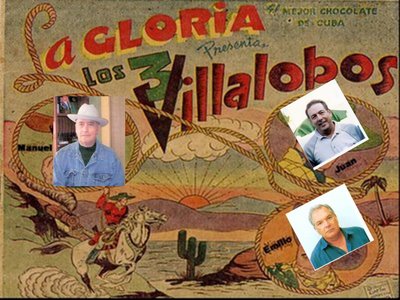 ARMANDO COUTO, AUTHOR OF “TAMAKÚN EL VENGADOR ERRANTE”. PHOTOS.
ARMANDO COUTO, AUTHOR OF “TAMAKÚN EL VENGADOR ERRANTE”. PHOTOS.
“The Hindu Prince of the Cubans”. The work of a brilliant writer in popular memory.
The popular phrase “It escaped to Tamakún below the turban”, used to refer to a highly skilled, intelligent or extremely agile individual, was born of the prolific imagination of Cubans, although it seems imported from eastern nations or Islamic culture .
The truth is that in 1941 Armando Couto, (Havana 1918-Miami 1995) considered the most outstanding writer of radio soap operas in Latin America, in his time, created the work Tamakún, the avenging avenger, total audience on the Caribbean island and others Spanish speaking countries.
The story recreates the adventures of a Hindu prince, who after recovering the fictional Kingdom of Sarakardi, snatched by force of arms from his parents, killed in the attempt at the hands of the evil Sakiri El Negro, decides to fight against crime and injustice , Anywhere in the world.
The intrepid character becomes a fiction hero for the radio audience in the largest of the Antilles at a time when this medium captivates the attention of the masses, with a marked impact on adolescents and young people and very soon the voice “He escaped to Tamakún … “burst into the speech of the population.
Tamakún comics were the entertainment of children and adults in Latin America and took to the big screen.
In Cuba, seven stories of the Tamakún series were broadcast, the avenging avenger and such was its repercussion in the international plane that came to be transmitted in the 50s, with great acceptance in other Latin American places, such as Mexico, Puerto Rico, Venezuela, Colombia, Chile and Peru.
In 1975 the work is published in the region in comics by Couto, already based in the United States and drawings by Miguel F. Callejas, with resounding success, even many readers were devoted to collecting these magazines and still conserve them as invaluable pieces. spiritual value.
Armando Couto, also wrote “Los Tres Villalobos”, with more than twenty years on Cuban radio and source of inspiration for several films in Mexico and his pen is also due to Cazán el Cazador, Captain Espada, Tierra Adentro and Kalimán, between other novels and radio stories.
Many of his great creations were pirated and never received author’s rights and it is said that he did not even make any claim, but when today or tomorrow the term comes to our lips, it escaped to Tamakún from under the turban, we may be without knowing it, paying homage to the precursor of the soap opera.
 ARMANDO COUTO, AUTOR DE “TAMAKÚN EL VENGADOR ERRANTE”. PHOTOS.
ARMANDO COUTO, AUTOR DE “TAMAKÚN EL VENGADOR ERRANTE”. PHOTOS.
“El Príncipe Hindú de los Cubanos”. La obra de un brillante escritor en la memoria popular.
La popular frase “Se le escapó a Tamakún por debajo del turbante”, utilizada para referirse a un individuo sumamente hábil, inteligente o de agilidad extrema, nació de la prolífica imaginación de los cubanos, aunque parezca importada de naciones orientales o de la cultura islámica.
Lo cierto es que en 1941 Armando Couto, (La Habana 1918-Miami 1995) considerado el más sobresaliente escritor de radionovelas de América Latina, en su época, creó la obra Tamakún, el vengador errante, de audiencia total en la isla caribeña y otros países de habla hispana.
El relato recrea las aventuras de un príncipe hindú, que tras recuperar el ficticio Reino de Sarakardi, arrebatado por la fuerza de las armas a sus padres, muertos en la intentona a manos del malvado Sakiri El Malayo, decide luchar contra el crimen y la injusticia, en cualquier lugar del mundo.
El intrépido personaje deviene héroe de ficción para la radio-audiencia en la mayor de las Antillas en una etapa en que este medio acampara la atención de las masas, con marcada incidencia en adolescentes y jóvenes y muy pronto la voz “Se le escapó a Tamakún…” irrumpió en el habla de la población.
Las historietas de Tamakún fueron el entretenimiento de niños y mayores en latinoamérica y se llevaron a la pantalla grande.
En Cuba se radiaron siete historias de la serie Tamakún, el vengador errante y tal resultó su repercusión en el plano internacional que llegaron a trasmitirse además en la década del 50, con gran aceptación en otros lugares latinoamericanos, como México, Puerto Rico,Venezuela, Colombia, Chile y Perú.
En 1975 la obra es publicada en la región en historietas con guión de Couto, ya radicado en Estados Unidos y dibujos de Miguel F. Callejas, con rotundo éxito, incluso muchos lectores se dedicaron a coleccionar estas revistas y aún las conservan como piezas de inestimable valor espiritual.
Armando Couto, escribió tambien “Los Tres Villalobos”, con más de una veintena de años en la radio cubana y fuente de inspiración para varias películas en México y a su pluma se deben además ‘Cazán el Cazador’, ‘Capitán Espada’, ‘Tierra Adentro’ y ‘Kalimán’, entre otras novelas y cuentos radiales.
Muchas de sus grandes creaciones fueron pirateadas y jamás recibió derechos de autor y se dice que ni siquiera realizó reclamo alguno, pero cuando hoy o mañana nos venga a la boca el término Se le escapó a Tamakún por debajo del turbante, estaremos quizá sin saberlo, rindiéndole homenaje al precursor de la radionovela.
Agencies/Arrajatabla/Alberto Denis/ Internet Photos/ Arnoldo Varona/ TheCubanHistory.com
THE CUBAN HISTORY, HOLLYWOOD.













